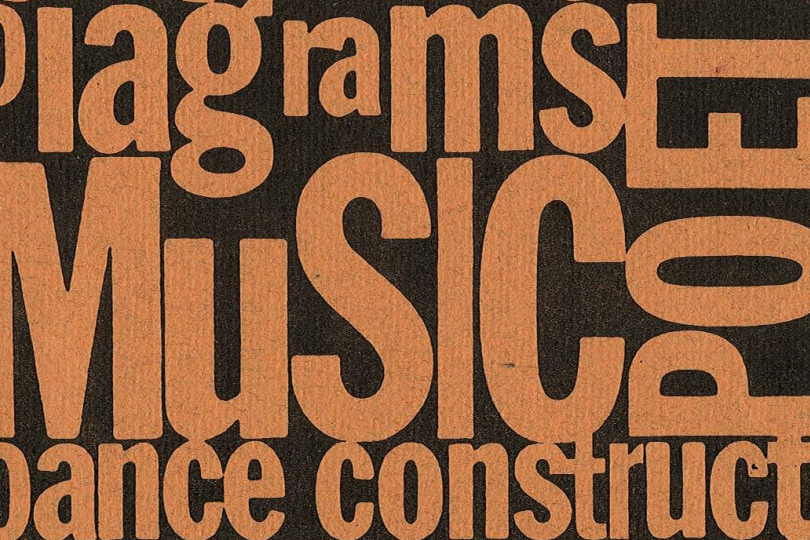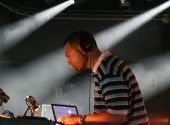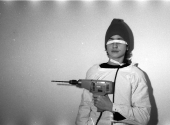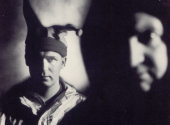
Milestones in Music History #32: La Monte Young, The Birth of Minimalism
In the same years in which Berio, from our last episode, was radically transforming the universe of electronic music, another pioneer came forward. He tried to eviscerate sound, to shatter it and to try to understand its deepest essence. At this time there was a return to the contemplation of sound, an attempt to understand its essence. A need to conceive of music as if it were almost a scientific process – to highlight the importance of the process in the context of musical creation. And it was precisely this principle from which the musical transformation of La Monte Young started.
The music world in the postwar period, as reflected in the music produced during those times, was incredibly fervent. This is probably because humanity, after the two world wars, wanted to redeem its existence in the world – wanted to belong to the ecosystem and to the miracle of Creation. Music, especially experimental and electronic music, was among the performing arts that most embodied the post-war ideals: deconstruction, dismantling and reconstruction.
This predominant role of music was made possible thanks to the fact that one composer was able to create a link between the "classical" method of composing and new forms of musical "modelling". La Monte Young was the composer capable of creating the evolutionary bridge between the music of the past and that of the post-war period.
Born in Bern, Idaho, La Monte Thornton Young had an innovative and controversial approach to music from an early age, when he used to stop on the street to listen to noises emitted by natural elements, such as the wind blowing, but also artificial and mechanical noises, such as those generated by the electronic transformers that sat atop every light pole on the street.
He began his music studies in Los Angeles where he obtained a three-year degree and was lucky enough to fit into the local jazz scene, where he met some of the most skilled jazz players of the time, such as Eric Allan Dolphy Jr., Don Cherry and the famous free jazz and hard bop drummer Billy Higgins.
A major turning point occurred in 1959 when Young while taking a course at UC Berkeley that started in 1958 (and lasted two years), began attending the Darmstädter Ferienkurse. It was a regular summer event of contemporary classical music, founded in 1946 by musicologist and music critic Wolfgang Steinecke.
A summer creative hub, almost like a two or three-week summer school course, designed exclusively for musicians and especially dedicated to musical composition. Many composers of electronic music, especially experimental, held courses and seminars in this special school, including Pierre Boulez, Bruno Maderna, Henri Pousseur and Luciano Berio.
None other than Karlheinz Stockhausen taught the course the year Young attended school. This experience was decisive because it modelled Young on Stockhausen's hyper-experimental approach and deeply influenced him with his first compositions. The second fundamental experience was the study of electronic music in New York under Richard Maxfield.
Maxfield expanded Young's influences, introducing him to Indian classical music, Gregorian chant, traditional Japanese gagaku music and the world of Indonesian gamelan music. But these influences were not the only reason New York was fundamental for Young. There for the first time, he encountered the artistic movement called Fluxus.
Fluxus was a community of artists, designers, poets and composers, who favoured the process that leads to the completion of artistic works, rather than the result of the work itself. Young met its founder, Lithuanian artist George Maciunas, who had published the artist's book An Anthology of Chance Operations, edited by Young himself.
He fitted into the art collective well, to such an extent that he scheduled a series of concerts in December 1960 at Yoko Ono's top-floor loft. He also began, during this time, to produce haiku-style dreamlike compositions and texts. The music, experimental and minimalistic, was supposed to accompany actions indicated by Young himself – which were, in the majority of cases, impossible to carry out. One of the most provocative was certainly "Composition #10" (dedicated to Bob Morris), for which Young instructed the performer to "Draw a straight line and follow it".
They were compositions made in the spirit of Dada and respected the concept of incompleteness and indeterminacy, a strong point of the Fluxus movement. Some of the actions described were unfeasible (such as "Composition #2", for which Young gave essential instructions – "Build a fire", envisaging the installation of a fire on stage), or unconventional, such as "Composition #5" (the performer should release a butterfly into the room).
On the other hand, some others were slightly more feasible, such as "Composition #7", in which the performers play a perfect fifth and Young gave the simple indication "To be held for a long time" – it was performed for the first time in 1961 by a string trio in New York. The inspiration for these compositions was certainly Cage, whose writings and music Young had the chance to encounter while in Darmstädt. However, Young goes further, questioning the definition of music itself.
Crossing the boundaries between various performing arts, he combined the feeling of downtown music – a fertile experimental scene of downtown New York in the 1960s – and the neo-Dada visual arts. However, the real turning point came in 1962, when Young founded the so-called Theater of Eternal Music (also known as The Dream Syndicate).
The Theater was a musical supergroup which aside from Young consisted of: percussionist, composer, poet and occultist Angus MacLise; video artist and experimental filmmaker Tony Conrad; minimalist composer Terry Riley; and singer and performer Marian Zazeela (who would become Young's wife the following year). Various others participated in the group, including the legendary violinist of the Velvet Underground, John Cale.
The group produced mostly improvised compositions, making use of long sustained tones, and employing unusual harmonic combinations. Not only that, they made use of Riley's knowledge of just intonation and Young also employed sine wave generators and other, sometimes awkward electronic equipment, such as the 60-hertz motor from his turtle's aquarium tank.
Young intended to produce excessively sustained sounds, and the pretext of the project served for one of his most famous creations, the Dream House. It was a sound and light installation, in which sine wave sounds were generated, which were excessively prolonged.
Indeed, the musical environment created by Young and Zazeela was maintained from September 1966 to January 1970, and only interrupted to listen to different music or to analyse the situation in the sudden absence of sound. This mirrored Young's musical concept, for which sound had no beginning and no end; the process, and therefore the continuation and duration of sound were the most important aspects of the compositional production.
The work considered by Young himself as the most important of his career was completed in 1974. Begun ten years earlier, the composition entitled The Well-Tuned Piano was perhaps the most representative of his career and his musical theory. It was an improvisation, using a piano tuned to just intonation, lasting five or six hours. Young used the Imperial Bösendorfer piano, as it is larger and has eight octaves, with the possibility of using a greater number of notes in the bass of the piano.
La Monte Young fundamentally influenced the history of music – especially electronic and experimental music. Not only did Young contribute to the development of Fluxus and the evolution of combined visual and sound arts, but he is credited as the father of minimalism and the composer who introduced the concept of drone music to the West.
Young managed to experiment and dare as no one had ever done, providing an innovative perception of sound and bringing attention to the compositional process, rather than the result. Many artists were inspired by Young, for example, The Velvet Underground, in which John Cale contributed the musical knowledge he acquired during his work with Young.
Others also, such as Sonic Youth, the godfather of ambient music Brian Eno and in the world of drone music Dylan Carlson, who claimed to be influenced by La Monte Young. Even Lou Reed, mentions him in his album Metal Machine Music.
In the meantime, while they were experimenting with sounds and electronic generators on the East Coast, on the American West Coast a genre was being born. It brought a breath of fresh air, putting music in association with one of the most adrenaline-pumping and artistic activities – surfing. In the next episode of Milestones, we will talk about The Challengers.
What can we consider minimal art today? Was La Monte Young a single crazy visionary, or have his ideas continued? Who has taken over the reins of drone music today? And is it still possible to be amazed by something or has everything already been experienced in music?
Leave your opinion in the comments below!
If you have found an error or typo in the article, please let us know by e-mail info@insounder.org.





